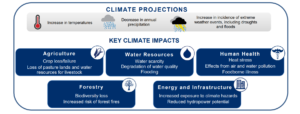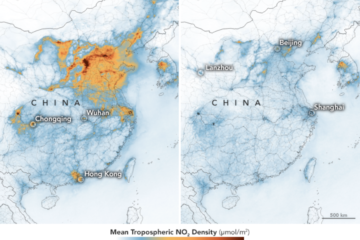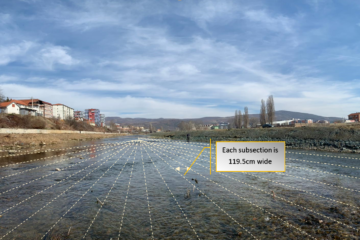According to geological evidence, the Earth’s climate has been constantly changing, the temperatures going higher and lower over the decades. However, now it is facing changes more rapidly than at any point in the history of modern civilization.
What causes climate change?
What is affecting the climate change the most now is human activity, and its influence is increasing enormously by unregulated acts such as burning fossil fuels, cutting down rainforests, farming livestock and so on.
Gasses such as water vapor, carbon dioxide, methane, nitrous oxide and ozone trap the sun’s heat in the Earth’s atmosphere and stop it from leaking back into space which is known as the greenhouse effect.
At a certain point these gasses occur naturally, but what’s increasing the natural greenhouse concentration massively is human activities as mentioned.
Some of the causes are:
- Burning coal, oil and gas which produces carbon dioxide and nitrous oxide.
- Cutting down trees (deforestation). They absorb CO2 from the atmosphere, is this way they contribute on improving the climate. If trees are cut down the beneficial effect is lost and the carbon stored there is released into the atmosphere, increasing the greenhouse gasses.
- Increasing livestock farming. Cows and sheep produce large amounts of methane when they digest their food.
- Fertilizers containing nitrogen produce nitrous oxide emissions.
Fluorinated gases produce a very strong warming effect, up to 23 000 times greater than CO2. Thankfully these are released in smaller quantities and are being phased down by EU regulation.
Effects of climate change
Global climate change has already had observable effects on the environment. Glaciers have shrunk, ice on rivers and lakes is breaking up earlier, plant and animal ranges have shifted and trees are flowering sooner.
Effects that scientists had predicted in the past are now occurring: loss of sea ice, accelerated sea level rise and longer, more intense heat waves.
The consequences of changing the natural atmospheric greenhouse are difficult to predict, but certain effects seem likely:
- On average, Earth will become warmer. Some regions may welcome warmer temperatures, but others may not.
- Warmer conditions will probably lead to more evaporation and precipitation overall, but individual regions will vary, some becoming wetter and others drier.
- A stronger greenhouse effect will warm the oceans and partially melt glaciers and other ice, increasing the sea level. Ocean water also will expand if it warms, contributing further to sea level rise.
- Meanwhile, some crops and other plants may respond favorably to increased atmospheric CO2, growing more vigorously and using water more efficiently. At the same time, higher temperatures and shifting climate patterns may change the areas where crops grow best and affect the makeup of natural plant communities.
Potential risks of climate change in Kosovo
The climate of Kosovo can be considered as continental climate, consisting of warm summers and cold winters. In the southwest Dukagjini Plain, this transitions to a mild Mediterranean climate with more frost-free days and higher annual rainfall. Climate change adaptation remains a challenge and country-specific studies of climate trends, projections, and impacts are limited.
While Kosovo’s large service sector (67 percent of GDP) is less vulnerable to climate change, agriculture (14 percent) and industry (19 percent) are important drivers of the economy and are vulnerable to water shortages, heat waves, drought and flooding.

Source: Climate Change Risk Profile Kosovo, USAID,2017 – https://www.climatelinks.org/resources/climate-change-risk-profile-kosovo
School Strike for Climate/ Fridays for Future
The global movement towards climate change started in August 2018, with a fifteen-year-old girl from Sweden, Greta Thunberg, skipping school on Fridays to strike in front of the Swedish parliament against the lack of action on climate crisis. Her actions ended up sparking an international movement for action against climate crisis, inspiring millions of students and adults to go on strike for the planet, forcing governments to listen.
School students and environmental activists from all over the Balkans joined millions of other protesters around the world on the Friday’s strike, September 22nd, the largest mobilization yet attempted to now, demanding that governments take action towards climate change.
Pristina was part of more than 150 cities taking the initiative. The protest was organized by the Termokiss community center and GAIA Kosovo, an NGO promoting social and environmental justice. Youth gathered at the Termokiss building in the Kosovo capital before moving to Zahir Pajaziti Square and protesting in front of the Ministry of Environment and Spatial Planning.
Sources:
https://climate.nasa.gov/effects/
https://climate.nasa.gov/causes/
https://climate.nasa.gov/effects/
https://www.fridaysforfuture.org/more
https://balkaninsight.com/2019/09/20/balkan-youngsters-join-global-climate-change-action/


